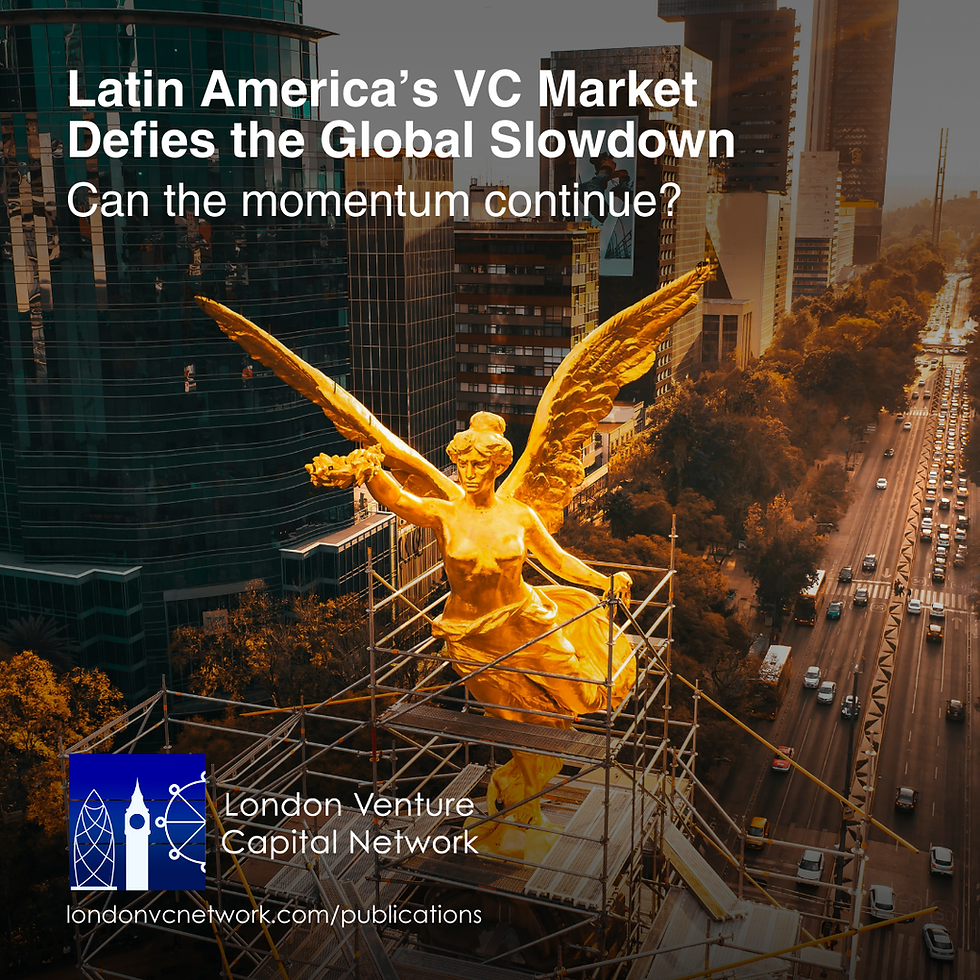Where has it all gone? What is causing the late-stage investment drought?
- LVCN Research & Publications Team

- Apr 15, 2024
- 3 min read
Updated: Apr 7

Since the pandemic, venture capital has witnessed a notable pullback from investors across various stages of investment. In fact, the global venture dollar volume has experienced a year-on-year change of -53%. In particular, late stage investments dropped from around $94.1Bn in Q4 of 2021 to only $39.2Bn in Q1 of 2023. This is posing challenges for both investors and founders alike. We propose that this drastic drop is largely due to a confluence of economic uncertainties and market adjustments. In this article, we will break down the reasons behind the drop into two sections: why VC investors are pulling back in general, and what specifically is happening in the late-stage investments amid this trend.
Written by: Jonathan Ouyang
-----------------------------------------------------------------------------------------------------------------------------------------------------------------------------------------------------
VC Investor’s Pullback
Economic Volatility and Valuation Concerns
Generally speaking, the slowdown in funding is driven by a turbulent economic climate. Perhaps most notably, interest rate hikes and big exogenous shocks. Higher interest rates made the cost of borrowing more expensive, making debt-financed funds harder to come by. In addition to its impact towards earlier-stage investments, late-stage investments are hit particularly hard, as these start-ups rely on debt to fuel growth and operations. Big exogenous shocks such as the collapse of the Silicon Valley Bank added to the problematic funding landscape. The bank had more than 20,000 start-up depositors with $5 million or less in revenue.
Furthermore, there have been increasing difficulties in valuations. With unforgiving market corrections from the soaring highs of 2021, investors are becoming more hesitant to commit capital. This is perhaps best reflected in the drop in late-stage funding: a 63% reduction year-over-year in Q3 of 2022.

Market Dynamics and Shifting Investor Sentiments
In addition to economic shocks and valuation concerns, we have also witnessed a reduction in Initial Public Offerings (IPO) since 2021’s peak. This means that investors now face longer lock-up periods for the capital, which is diminishing their liquidity, thus adding to their hesitancy to enter into new ventures.
With all the factors above, it is evident that investors have become more risk-averse. In fact, in the current economic landscape, many investors have opted to switch to higher yields with safer assets. Indeed, this means that investor preferences have shifted (perhaps temporarily, as we will show later) away from venture capital to more secure assets such as bonds and equities with a solid performance record.
Concerning Late-Stage Investments
The following diagram shows Crunchbase’s data on the change in late-stage investments over the past few quarters. It is clear that we’re witnessing a particularly pronounced drop in late-stage investments. On top of the reasons we’ve outlined above that equally affected late-stage investments, there is one particular reason that carries some weight here.
Valuation Adjustments
Late-stage investments, as we have covered in the previous article, are difficult to value. Indeed, it has been particularly impacted by the market’s valuation adjustments. In this regard, because high valuations set in 2021’s market have become unsustainable, and required significant calibration, late-stage investments have been deemed to be more risky. Thus, companies at this stage will unfortunately face a tougher market in securing funds, with some needing to readjust their valuation to align with more conservative investor assessments.

Anticipated Shifts in Investment Pattern
Nevertheless, even though the current situation seems bleak, there is no guarantee that it will stay this way. In fact, to provide a more optimistic view, venture capital funds are currently sitting on a staggering $290Bn of dry powder, a portion of which is to be designated for new investments. Combined with the unique market conditions, where we have lowered start-up valuations, we may see a surge in the deployment of capital by venture capital funds as the market stabilises. This speculation stems from an observation of historical trends, where downturns in investment is usually followed by above-average returns.

There is no doubt that the venture capital investment landscape is currently in a rut, and undergoing a period of recalibration. And while we do see a suffering image of late-stage investments, it is by no means limited to this stage of investments. As we have shown, the slowdown is caused by a mix of economic variables, shifting market dynamics and changing investor sentiments. However, while the current landscape does indeed signal caution, we may also exercise some level of cautious optimism, where the accumulation of dry powder and the unique conditions with regards to valuation does hint to some extent of rejuvenation in the future.






